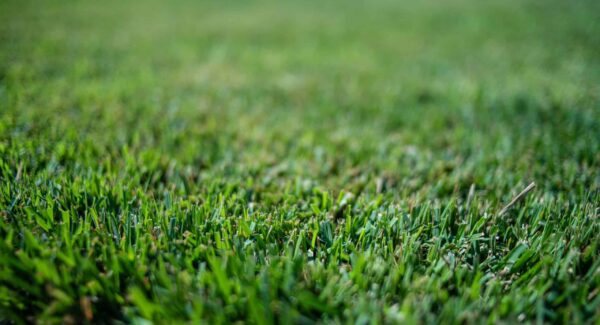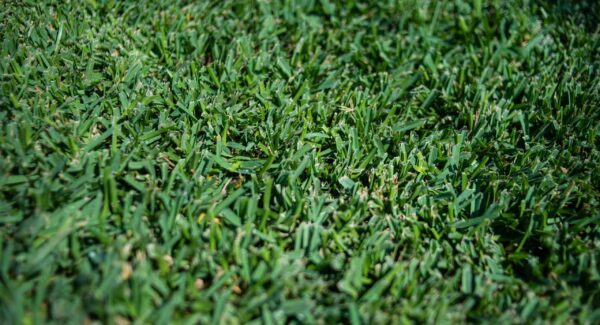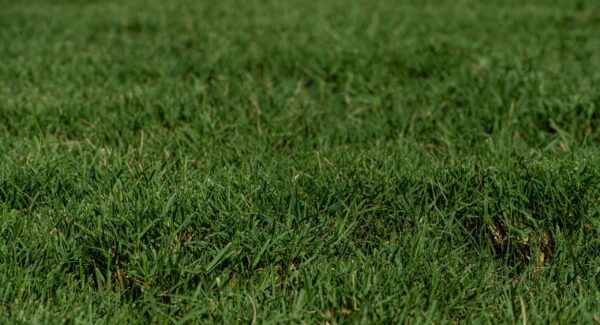Best Time to Water Grass in Texas
How and when to water a lawn in Texas is one of the most common questions for homeowners across Texas who take pride in their lawns and wonder what the ideal watering schedule is to maintain a lush, healthy lawn. A green and thriving lawn isn’t just about aesthetics but proper care and attention.
Watering is a crucial part of lawn maintenance. Grass cannot grow, stay green, or withstand Texas’s challenging weather conditions without sufficient water. However, as with all aspects of lawn care, balance is crucial —too much or too little water can cause more harm than good. A properly watered lawn is more resilient to stress, disease, and pests, greatly enhancing its health and vitality.
Considering the Texas climate, characterized by dry, scorching summers (especially in South Texas, where temperatures can reach around 100°F), timely watering requires special attention if you want a magazine-worthy lawn. Drought can be a significant challenge, and neglecting proper watering practices will leave your lawn far from its signature green hue.
To avoid this outcome, this guide answers several critical questions:
- Why timing matters for watering your lawn
- The best time of day to water your lawn in Texas
- Times of day to avoid watering
- How often to water your lawn in Texas
- The amount of water your lawn needs
- Watering practices for Bermuda, Zoysia, and St. Augustine grasses
- Top tips for adequate watering
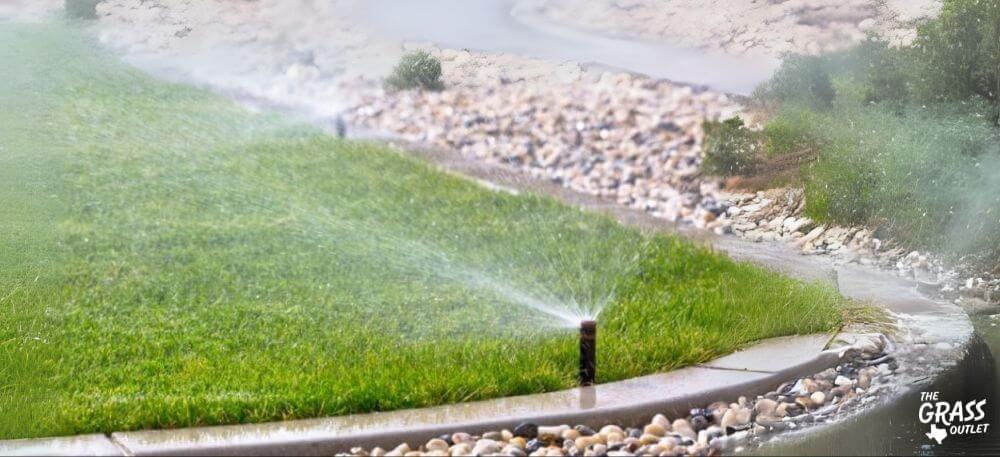
Why Timing Matters for Watering Grass
Watering your lawn at the right time significantly impacts the efficiency of water absorption and the overall health of your grass. Watering during unsuitable periods can lead to excessive evaporation or even increase the risk of diseases.
One of the primary issues with watering at the wrong time is unnecessary water loss due to evaporation. Additionally, watering in the evening can leave moisture on the grass overnight, creating ideal conditions for fungal infections and other diseases. This is why choosing the optimal time for watering influences your lawn’s long-term health and appearance.
The best time to water your lawn is between 4:00 and 10:00 a.m. During this time, cooler temperatures reduce evaporation, while calmer winds help water reach the grass’s roots before evaporating. Early morning watering provides lasting moisture, helping grass withstand heat and sunlight.
What happens if you water at the wrong time?
Watering at noon under intense heat and direct sunlight accelerates water evaporation, reducing its availability for the grass. On the other hand, watering at night leaves moisture trapped on the grass blades, creating a perfect environment for grass fungus and diseases to thrive.
Adjusting Watering Practices to Climate and Grass Type
The optimal time and frequency for watering depend on the specific conditions of your area and the type of grass you are growing. For instance, lawns may require more frequent watering due to faster soil evaporation if you live in a region with a warm climate and low humidity.
Conversely, cooler or more humid climates demand less frequent watering since the soil retains moisture for extended periods.
When it comes to grass types, evergreen varieties often require less water compared to seasonal grasses.
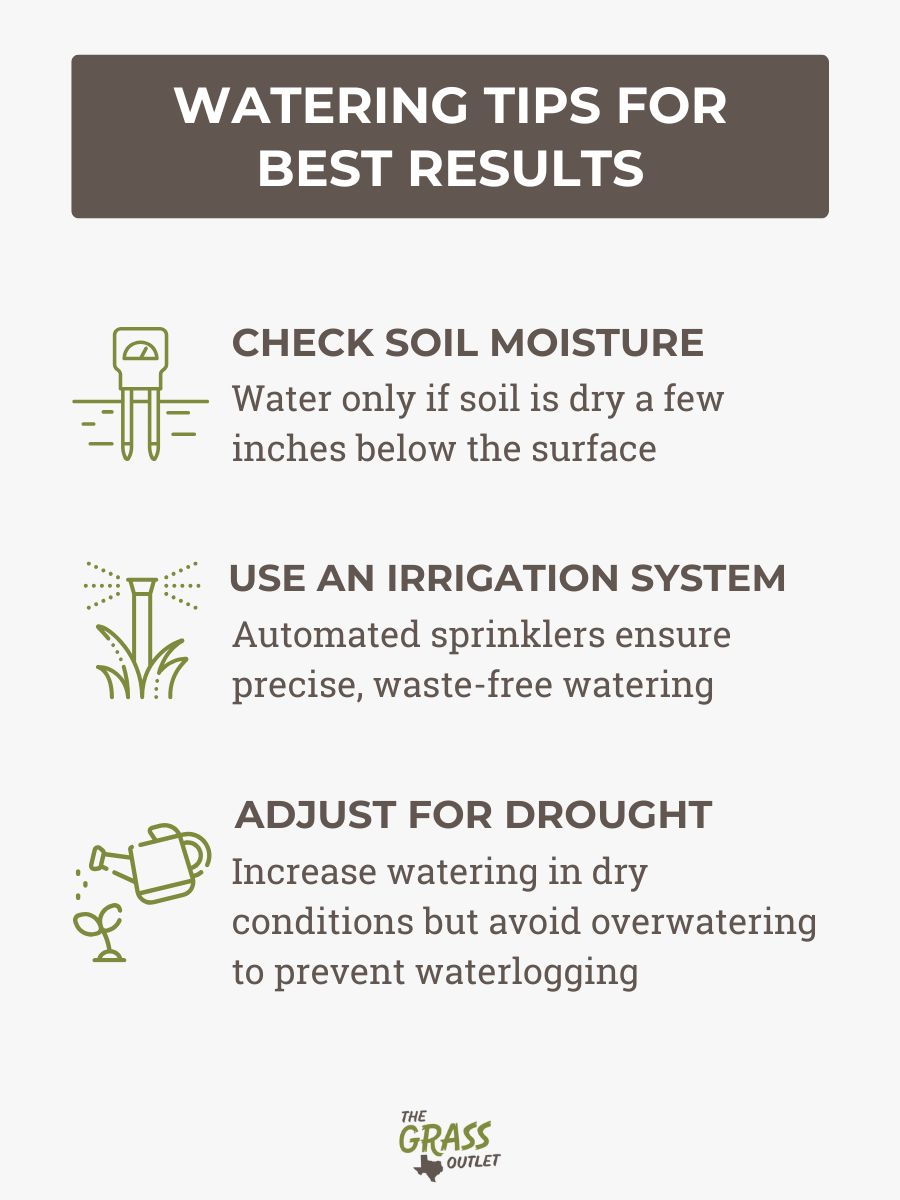
How to Achieve the Best Results:
- Check soil moisture before watering. Additional watering is unnecessary if the soil is still damp a few inches below the surface.
- Use an irrigation system. Automated sprinklers with timers provide precise and even watering, ensuring the right amount of moisture without waste.
- Adjust for drought conditions. During dry periods, increase watering to keep the grass hydrated but avoid overwatering, which can lead to waterlogging and harm the lawn.
What Is the Best Time to Water Your Lawn in Texas?
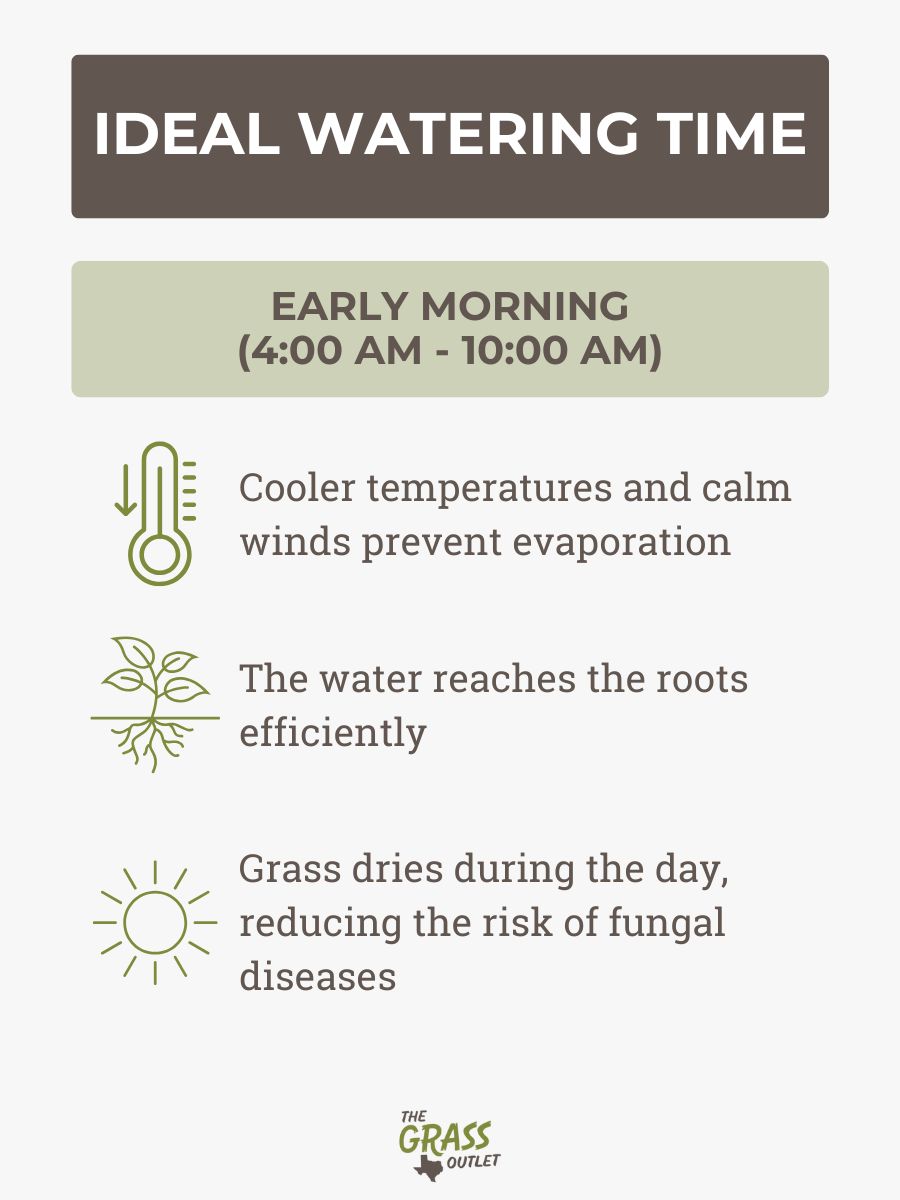
The ideal time to water your lawn in Texas is early in the morning, between 4:00 and 10:00 a.m. Why this time? Cooler temperatures and typically calmer winds allow water to penetrate the soil effectively and reach the roots before the day’s heat accelerates evaporation.
While evening watering might seem practical due to cooler temperatures, it can accumulate moisture on the grass overnight, creating ideal conditions for fungal growth and other diseases. On the other hand, watering in the afternoon is often ineffective, as the sun’s heat speeds up evaporation, preventing grass from getting the moisture it needs.
Why Early Morning Watering Works Best:
- Lower temperatures and light winds minimize evaporation, ensuring water reaches the roots.
- Morning watering allows grass blades to dry out during the day, reducing the risk of fungal diseases.
- Calm morning winds prevent water from being wasted, ensuring more precise and adequate watering.
What Times of Day Should You Avoid Watering Your Lawn?
- Afternoon Watering: The worst time to water grass is in the middle of the day, The especially in the scorching Texas heat. High temperatures and intense sunlight cause rapid evaporation, preventing water from reaching the roots. This not only wastes water but also increases watering costs. Additionally, wet grass blades combined with sunlight can cause leaf burn and damage.
- Evening Watering: While it might seem convenient due to cooler temperatures, watering at night poses serious risks. Water on the grass blades overnight doesn’t evaporate quickly enough, creating an ideal environment for fungal diseases to thrive. Prolonged moisture on the lawn also attracts pests, further jeopardizing the health of your grass.
How Often Should You Water Your Lawn in Texas, and How Much Is Optimal?
Creating a proper watering schedule can make all the difference between a lush, green lawn and dry, lifeless grass. The key is finding the right balance between overwatering and underwatering the lawn.
Overwatering can make grass “lazy”—its roots stay shallow as there’s no need to search for water deeper in the soil. This makes the grass more susceptible to diseases and stress during droughts. On the other hand, insufficient watering can push the grass into dormancy, and prolonged water scarcity may lead to its decline.
The Best Watering Practice
Water less frequently but more deeply. Since water tends to evaporate from the top few inches of the soil faster, this method encourages roots to grow deeper into the soil to access the water deeper into the ground. This makes the grass more resilient to drought and extreme weather conditions. On average, lawns require 1 to 1.5 inches of water per week from rainfall or irrigation.
During dry summer months, watering once or twice a week is recommended. Watering can be less frequent in spring and fall as the soil retains more natural moisture. The key is to adjust your watering schedule based on the current weather and soil type.
Expert Tip for Optimal Watering
The most effective time to water your lawn is early in the morning, between 4:00 and 10:00 a.m. During this time, evaporation is minimal, and the plants have enough time to dry during the day. Avoid watering in the evening, as water on the grass overnight creates ideal conditions for fungal diseases.
How to Water Your Lawn by Season and Weather Conditions
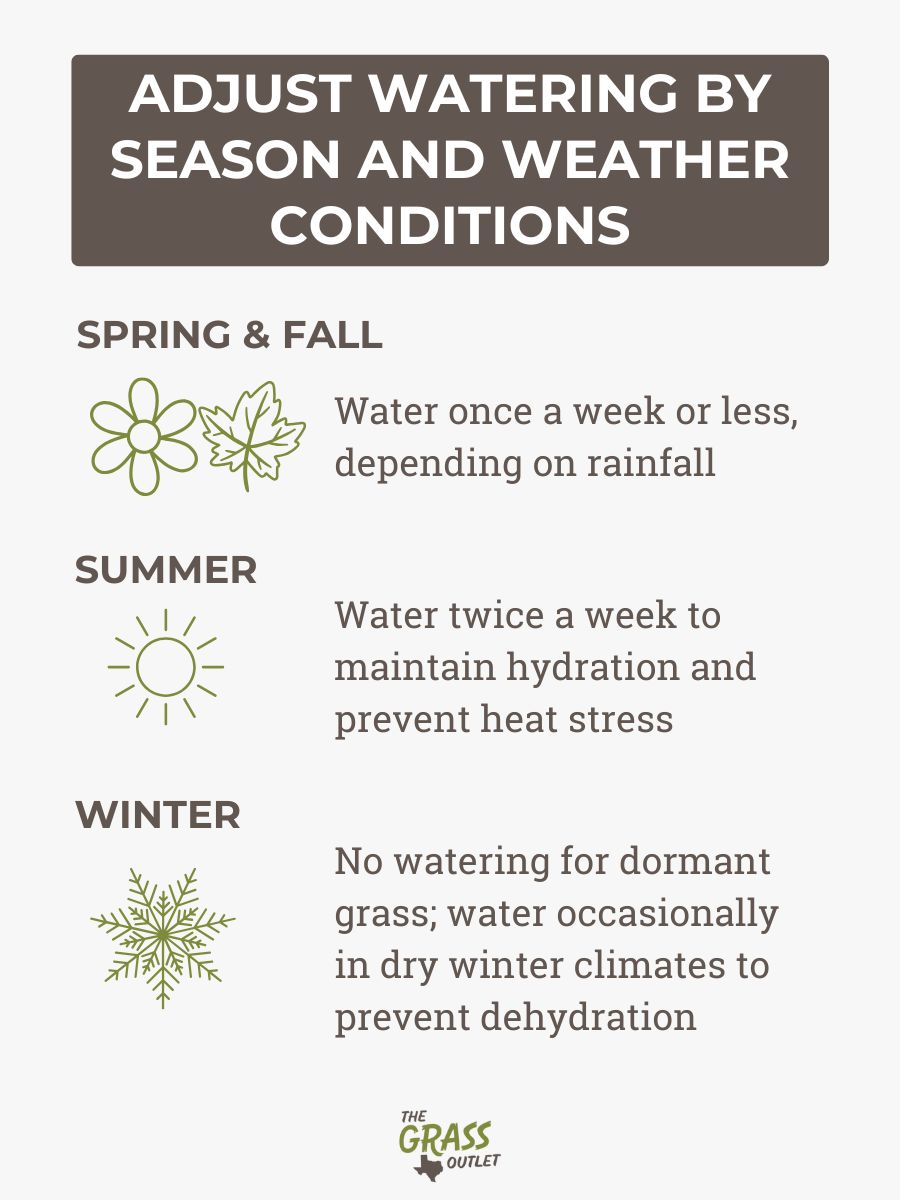
The climate in Central Texas is typically mild in spring and fall, with more natural rainfall and cooler temperatures. Depending on the amount of rain, watering once a week or even less is often sufficient during these seasons.
In summer, when hot weather and drought prevail, lawns require more frequent watering – usually twice a week – to prevent stress caused by high temperatures and lack of moisture. During winter, in areas where grass goes dormant, watering can be wholly halted unless you live in a dry winter climate, in which case occasional watering may still be necessary.
Watering During Extreme Weather Conditions
When a dry summer arrives, watering should be adjusted to keep the soil evenly moist but not oversaturated. Water is recommended deeply once a week so that moisture penetrates the soil and encourages root growth. Experts suggest a simple trick during extremely hot periods – manually check soil moisture. Insert your finger into the soil up to 2 inches deep; if it feels dry, the lawn needs watering.
The grass may show signs of stress during extreme heat, such as curled blades or a darker blue-grey color. In such cases, watering may be needed every three to four days to maintain greenness. When heavy rainfall occurs, watering should be suspended entirely until the soil dries enough to absorb additional water without forming a shallow moisture layer.
Tips for Adjusting Watering Based on Conditions:
- If your grass changes color or remains flattened after being stepped on, it’s a sign that it needs moisture.
- Use rain gauges or soil moisture sensors to track the water your lawn receives, whether from rainfall or irrigation.
- Avoid daily watering. Instead, water less frequently but more deeply to allow water to reach the roots. This strengthens the root system and makes your lawn more drought-resistant.
How to Water St. Augustine, Bermuda, and Zoysia Grass
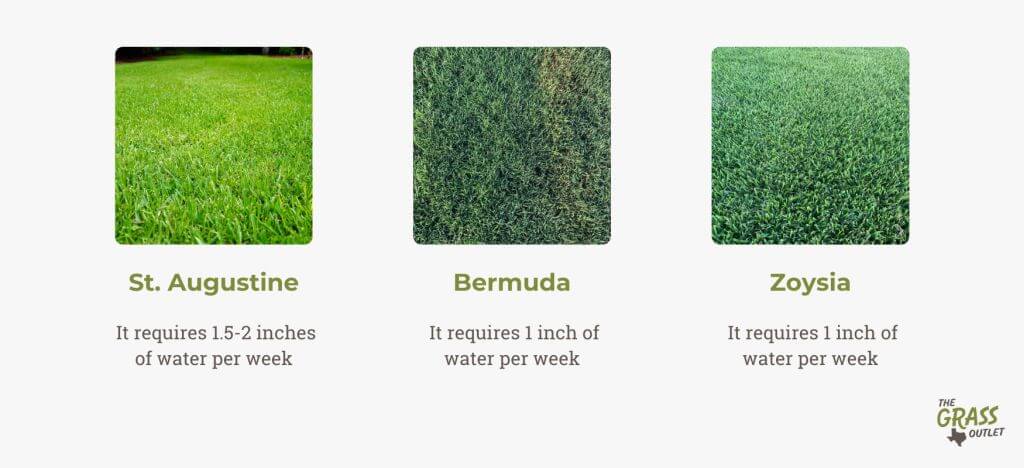
St. Augustine – Watering Schedule
St. Augustine grass has varying watering needs throughout the year. Summer months can be challenging, particularly in hot and dry regions. It is recommended that the lawn receives between 1.5 and 2 inches of water per week, ensuring moisture penetrates deeply into the soil with each watering session. In extreme drought, St. Augustine naturally enters a dormant state, a survival mechanism similar to hibernation. Many people mistakenly believe their lawn has died, but once sufficient rainfall or irrigation is provided and temperatures drop, the grass will resume growth.
As fall brings cooler temperatures, the grass slows growth and requires less watering. The watering frequency should be reduced during this period, but the soil should be well-saturated each time. This practice helps the grass gradually prepare for winter dormancy and conserves water.
St. Augustine grass typically enters a dormant phase in winter, especially in areas where temperatures drop below 55°F (13°C). During this time, watering should be minimized. Add water only during prolonged dry spells without precipitation, just enough to prevent the soil from completely drying out.
Bermuda – Seasonal Watering Practices
Bermuda grass requires about 1 inch of water per week through rainfall or irrigation to prevent dehydration during the hot and dry summer months. Deep but infrequent watering is recommended.
Regularly check soil moisture using a screwdriver or probe. Water only when the top 2 inches of soil are dry. If you notice bluish or dry patches on the lawn, target these areas with manual watering the following morning.
When Bermuda grass enters dormancy in winter, its water needs significantly decrease. Water only during extended dry periods without rain to ensure the soil does not become completely dry. Overwatering during this time can lead to root rot and disease.
As temperatures rise in spring and the grass begins to green up, gradually increase watering to the recommended 1-1.5 inches per week. Continue deep and infrequent watering to encourage a robust root system.
Tips for Different Soil Types
- Sandy soil loses moisture quickly and may require more frequent watering.
- Clay soil retains moisture longer but can become overly wet, increasing disease risk. It can be challenging for water to percolate clay soil, so longer irrigation runtimes are sometimes required. Use a soil probe to monitor moisture levels and adjust watering to suit your soil type.
Zoysia Grass – Watering Guidelines
When Zoysia grass is actively growing (green and thriving), it requires about 1 inch (2.5 cm) of water per week. During intense heat, this amount may increase to as much as 1.5 inches (3.8 cm) per week. Deep watering is essential to keep the lawn healthy and resilient against high temperatures and low precipitation.
Well-drained soil is essential for Zoysia grass. Standing water can lead to fungal diseases such as Zoysia Patch, which thrives in wet and humid conditions. If poor drainage is an issue, consider aerating the soil to reduce compaction and improve water flow.
Tips for Watering Zoysia Grass
To maintain a healthy lawn that can withstand stress (such as Texas’s hot, dry summers), it’s crucial to develop a deep and robust root system. This is best achieved through deep but infrequent watering, which allows moisture to penetrate the deeper soil layers, encouraging roots to spread in search of water.
Frequent, shallow watering promotes shallow root growth, making the grass more vulnerable to drought and disease.
Smart Water Management Practices:
- Drip irrigation delivers water evenly and directly into the soil, minimizing evaporation losses.
- Smart sprinklers optimize watering by adjusting to weather conditions, preventing overwatering on rainy days.
Monitor Your Lawn Regularly:
- Dry, brown patches usually indicate a lack of water during hot and dry periods.
- Overly soft soil, fungal growth, or water pooling are signs of overwatering.
- Adjusting your watering schedule based on these signs is vital to maintaining a healthy lawn year-round, even in challenging Texas conditions.
Practical Example:
To measure the recommended 1 inch of water, try the tuna can method:
- Place an empty tuna can in each watering zone and under your sprinkler.
- Turn on the water.
- Time how long it takes to fill the can.
This will tell you how long it takes to water to achieve the right amount and help ensure even coverage throughout all zones.
By carefully managing your watering practices and observing your lawn’s needs, you’ll promote a healthier lawn and save resources and time—an increasingly important consideration in sustainable lawn care.
Conclusion
Watering isn’t just about pouring water onto your lawn—it’s about understanding the needs of the grass, the soil type, and the weather conditions. Proper watering keeps your lawn healthy, lush, and resistant to drought and disease. On the other hand, overwatering can suffocate roots and promote fungal growth, while insufficient watering leads to drying and weakening of the grass.
Knowing how much, when, and how to water your lawn is crucial to achieving the perfect balance. Signs like curling blades or yellowing grass can indicate it’s time to take action.
For any questions about lawn care and proper watering, contact The Grass Outlet.
